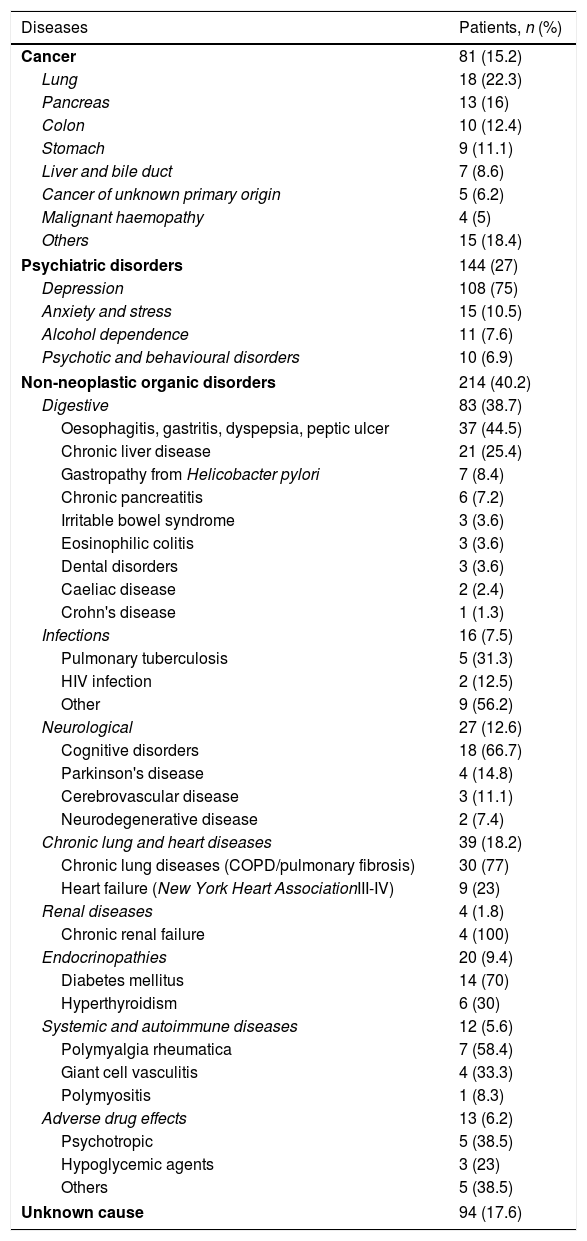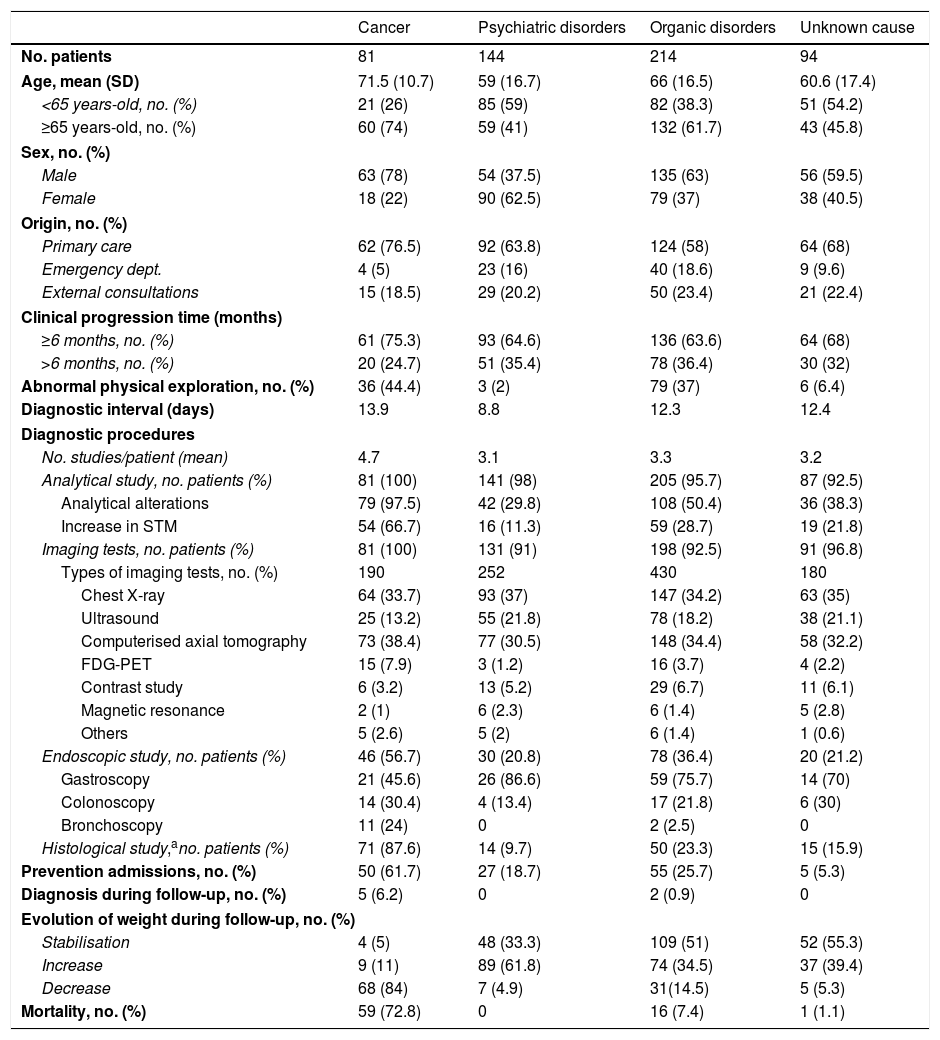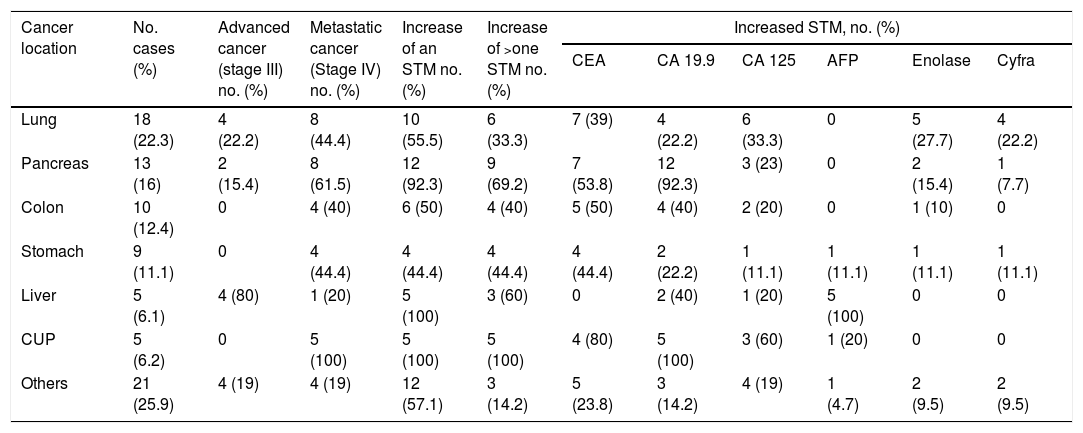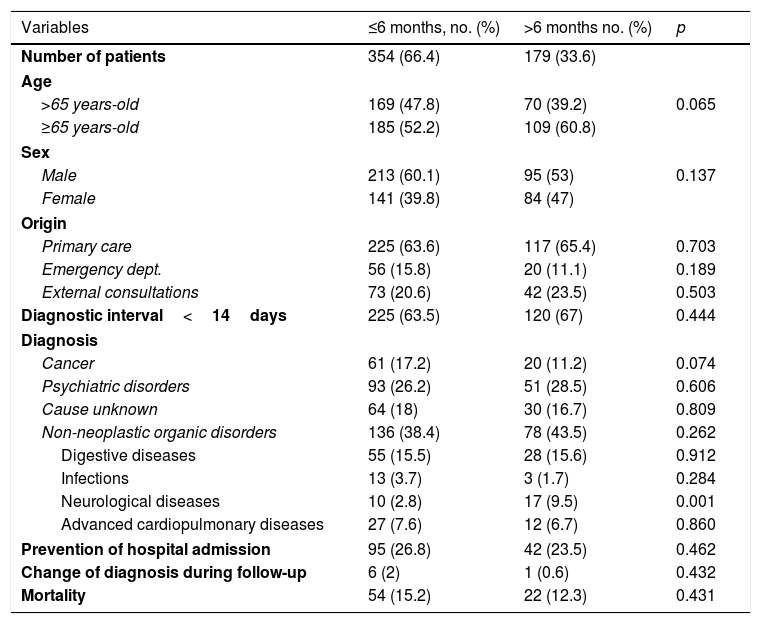The aims of the study were to analyse the epidemiology, prognostic and predictive factors of malignant disease on isolated involuntary weight loss (IIWL) and to know the effectiveness of the quick diagnosis unit in the evaluation of the process.
Materials and methodsProspective observational study realised from 2006 to 2015 of all patients who were evaluated with IIWL in the quick diagnosis unit. Demographic, clinical, diagnostic and evolutive variables were analysed. Through the analysis of logistic regression, predictive factors of malignant disease and prognostic factors were identified.
ResultsOf the 533 registered patients, 55.1% were ≥65 years old. The diagnostics were: non-neoplastic organic disorders in 214 patients (40.2%), psychiatric disorders in 144 (27%), cancer in 81 (15.2%) and unknown cause in 94 (17.6%). In 66.7% of the patients with cancer, there was an increase of serum tumour markers (STM). Being over 60 (OR: 2.57; 95% CI: 1.27–5.77; p=0.01), male (OR: 3.23; 95% CI: 1.52–6.87; p=0.002), increase of an STM (OR: 2.38; 95% CI: 1.17–4.8; p=0.016) and more than one STM (OR: 6.51; 95% CI: 2.62–16.13; p=0.000) were identified as predictive factors of malignancy. Mortality was 14.2%; the diagnosis of cancer (OR: 47.61; 95% CI: 20.76–109.19; p=0.000) was identified as a prognostic factor.
ConclusionsIIWL is a clinical syndrome that requires a study with a sequential protocol and follow-up. STM were identified as predictive factors of malignancy.
Los objetivos del estudio han sido analizar la epidemiología, el pronóstico y los factores predictivos de enfermedad maligna de la pérdida de peso involuntaria aislada (PPIA) y conocer la efectividad de una unidad de diagnóstico rápido en la evaluación del proceso.
Material y métodosEstudio prospectivo observacional realizado en el período de 2006-2015 de todos los pacientes evaluados de PPIA en la unidad de diagnóstico rápido. Se analizaron variables demográficas, clínicas, diagnósticas y evolutivas. Mediante un análisis de regresión logística se identificaron los factores predictivos de enfermedad maligna y factores pronósticos.
ResultadosDe los 533 pacientes registrados, el 55,1% tenían una edad≥65 años. Los diagnósticos fueron: trastornos orgánicos no neoplásicos en 214 pacientes (40,2%), trastornos psiquiátricos en 144 (27%), cáncer en 81 (15,2%) y causa desconocida en 94 (17,6%). En el 66,7% de los pacientes con cáncer existía el aumento de algún marcador tumoral sérico (MTS). La edad>60 años (OR: 2,71; IC 95%: 1,27-5,77; p=0,01), el género masculino (OR: 3,23; IC 95%: 1,52-6,87; p=0,002), el aumento de un MTS (OR: 2,38; IC 95%: 1,17-4,8; p=0,016) y más de un MTS (OR: 6,51; IC 95%: 2,62-16,13; p=0,000) se identificaron como factores predictivos de enfermedad maligna. La mortalidad fue del 14,2%, asociándose como factor pronóstico el diagnóstico de cáncer (OR: 47,61; IC 95%: 20,76-109;19; p=0,000).
ConclusionesLa PPIA es un síndrome clínico que requiere un estudio protocolizado secuencial y un seguimiento. Los MTS se han identificado como factores predictivos de enfermedad maligna.












